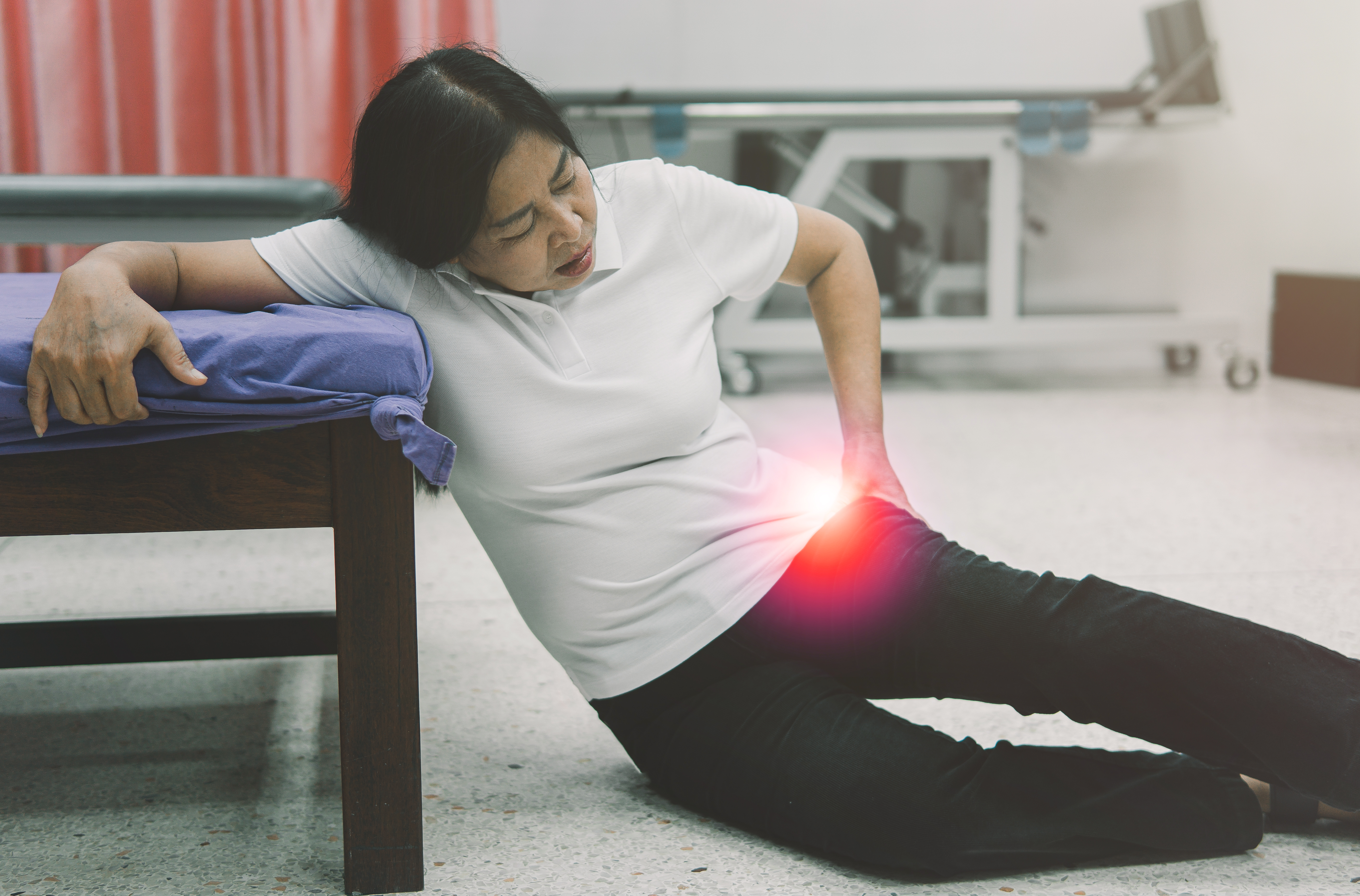
What is Trochanteric Bursitis?
Trochanteric bursitis is a condition characterized by inflammation of the trochanteric bursa, a fluid-filled sac located on the outer side of the hip. This bursa serves as a cushion to reduce friction between the bone (greater trochanter) and the surrounding soft tissues like muscles and tendons. When this bursa becomes inflamed, it can lead to pain and discomfort in the hip region.
Symptoms and Causes
Symptoms of trochanteric bursitis include sharp or aching pain on the outer side of the hip, which may radiate down the thigh. The pain often worsens with activities such as walking, climbing stairs, or lying on the affected side. Common causes of trochanteric bursitis include repetitive stress or overuse, hip injuries, poor posture, tight muscles, or underlying conditions like rheumatoid arthritis or osteoarthritis.
Treatment Options
Medical Treatments:
- Rest and Activity Modification: Limiting activities that exacerbate hip pain is crucial. Rest helps reduce inflammation in the bursa.
- Nonsteroidal Anti-Inflammatory Drugs (NSAIDs): Medications like ibuprofen can help alleviate pain and reduce inflammation.
- Corticosteroid Injections: For severe or persistent cases, corticosteroid injections may be administered directly into the bursa to reduce inflammation and provide significant pain relief.
- Surgery: Surgery is rarely required but may be considered if conservative treatments fail to alleviate symptoms. The procedure typically involves removing the inflamed bursa.
Role of Physiotherapy: Physiotherapy plays a central role in managing trochanteric bursitis, aiming to reduce pain, restore function, and prevent recurrence.
- Manual Therapy: Techniques such as soft tissue mobilization and joint mobilization help to release tension in the muscles surrounding the hip and improve mobility.
- Stretching and Strengthening Exercises: A tailored exercise program focusing on stretching tight muscles and strengthening the hip abductors, particularly the gluteal muscles, helps to support the hip joint and reduce pressure on the bursa.
- Postural Correction: Poor posture and biomechanics can contribute to the development of bursitis. Physiotherapists provide guidance on proper posture and movement patterns to reduce strain on the hip.
- Advanced Modalities:
- Shockwave Therapy: Used to promote healing and reduce pain by increasing blood flow to the affected area.
- Laser Therapy: Helps to reduce inflammation and accelerate tissue repair.
- Needling Techniques:
- Dry Needling and Acupuncture: These can be used to alleviate muscle tension and pain, promoting overall recovery.
Frequently Asked Questions (FAQs)
What are the early signs of trochanteric bursitis?
The early signs include sharp or aching pain on the outer side of the hip, which may extend down the thigh. The pain typically worsens with activities such as walking, climbing stairs, or lying on the affected side.
How is trochanteric bursitis diagnosed?
Diagnosis is usually based on a physical examination where the hip is palpated for tenderness. Imaging tests such as ultrasound or MRI may be used to confirm inflammation of the bursa and rule out other hip conditions.
Can trochanteric bursitis heal on its own?
Mild cases of trochanteric bursitis may improve with rest, activity modification, and simple home treatments like ice application. However, without proper treatment, the condition can persist or worsen.
How long does it take to recover from trochanteric bursitis?
Recovery time varies depending on the severity of the condition and adherence to treatment. With consistent physiotherapy and proper care, many patients see significant improvement within 4 to 6 weeks. More severe cases may take longer.
Will I need surgery for trochanteric bursitis?
Surgery is usually not required for trochanteric bursitis. Conservative treatments, including physiotherapy, rest, and possibly corticosteroid injections, are often effective. Surgery is considered only if symptoms persist despite other treatments.
What activities should I avoid if I have trochanteric bursitis?
Avoid activities that involve repetitive hip motion, such as running, climbing stairs, or lying on the affected side, as these can exacerbate the condition.
Can poor posture contribute to trochanteric bursitis?
Yes, poor posture and improper biomechanics can lead to uneven pressure on the hip joint, increasing the risk of developing bursitis. Correcting posture is an important part of both treatment and prevention.
When can I return to normal activities after trochanteric bursitis?
Return to normal activities depends on the severity of the condition and how well it responds to treatment. With proper management, most people can return to their usual activities within a few weeks, though it’s important to avoid aggravating the condition.
References
1. Pianka, M. A., Serino, J., DeFroda, S. F., & Bodendorfer, B. M. (2021). Greater trochanteric pain syndrome: Evaluation and management of a wide spectrum of pathology. SAGE Open Medicine, 9, 20503121211022582.
2. Boyd, M., Vijayaraghavan, N., & Karvelas, K. (2020). Evidenced-Based Management of Greater Trochanteric Pain Syndrome. Current Physical Medicine and Rehabilitation Reports, 8, 313-321.
3. Ramon, S., Russo, S., Santoboni, F., Lucenteforte, G., Di Luise, C., de Unzurrunzaga, R., … & Vulpiani, M. C. (2020). Focused shockwave treatment for greater trochanteric pain syndrome: a multicenter, randomized, controlled clinical trial. JBJS, 102(15), 1305-1311.
4. Disantis, A. E., & Martin, R. L. (2022). Classification based treatment of greater trochanteric pain syndrome (GTPS) with integration of the movement system. International Journal of Sports Physical Therapy, 17(3), 508.5. Crutchfield, C. R., Padaki, A. S., Holuba, K. S., Arney, M. M., O’Connor, M. J., Menge, T. J., & Lynch, T. S. (2021). Open versus arthroscopic surgical management for recalcitrant trochanteric bursitis: a systematic review. The Iowa Orthopaedic Journal, 41(2), 45.


